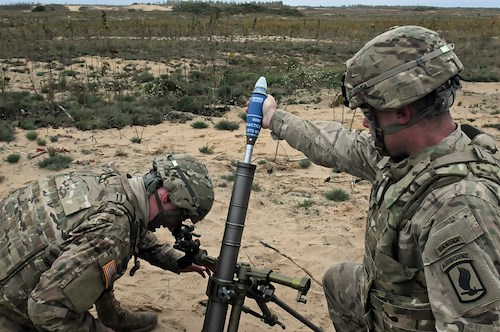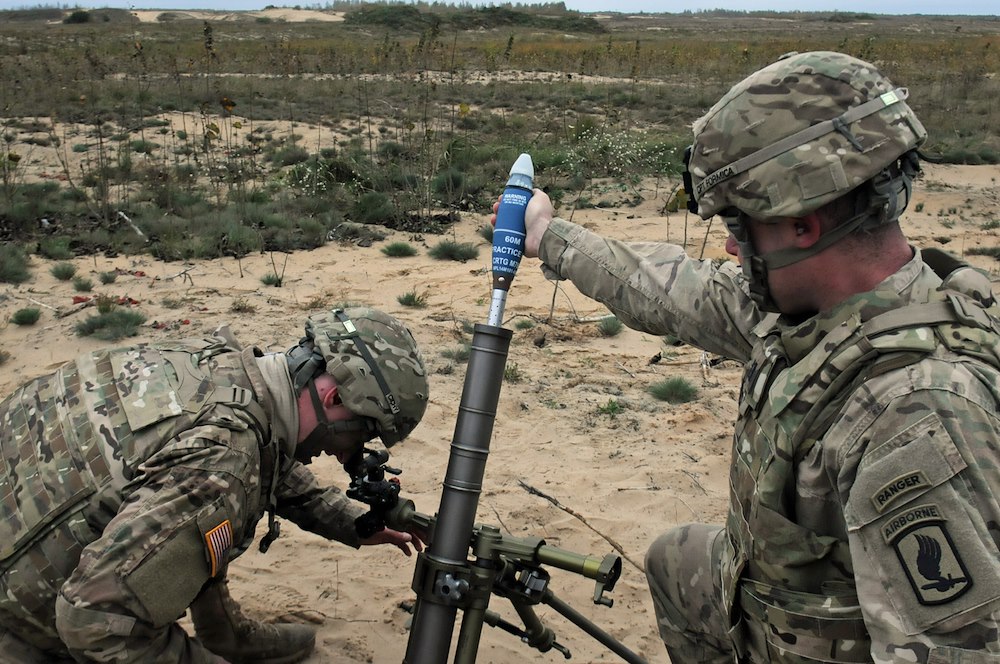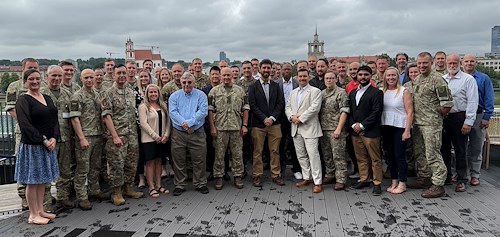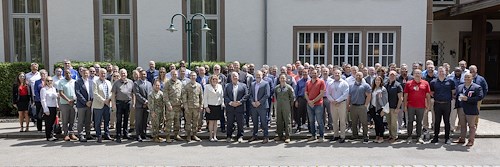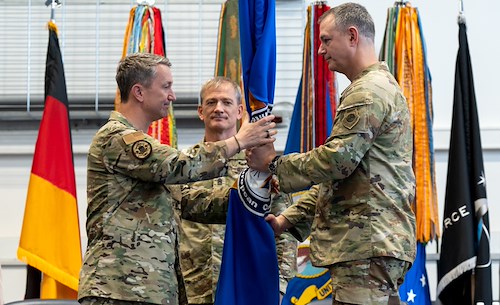Gallery contains 1 image
×
Photo 1 of 1
United States European Command Image
RUKLA, Lithuania – Capt. Anthony Formica, commander, Able Company, 2nd Battalion, 503rd Infantry Regiment, 173rd Airborne Brigade, “hangs a round” Oct. 4 during his unit’s mortar fire practice. Able Company arrived in Lithuania two-weeks ago to embark on a six-month rotation to train with their Lithuanian partners as part of Atlantic Resolve, a U.S. led effort being conducted in Eastern Europe to demonstrate U.S. commitment to the collective security of NATO and dedication to enduring peace and stability in the region. The 173rd Airborne Brigade, based in Vicenza, Italy, is the Army Contingency Response Force in Europe, and is capable of projecting forces to conduct a full range of military operations across the United States European, Central and Africa Command areas of responsibility within 18 hours.
Photo by: Staff Sgt. Corinna Baltos
RUKLA, Lithuania – “Hang it!” “Fire!” These were the commands issued by the squad leader as Paratroopers from Able Company, 2nd Battalion, 503rd Infantry Regiment, 173rd Airborne Brigade, practiced firing the M224 60mm mortar system at an abandoned airfield near Rukla, Lithuania Oct. 3-6.
“We are out here training to keep our section proficient, but also to train the forward observers, and make them comfortable with using the mortar system,” said Staff Sgt. Pablo Caraballo, the mortar section non-commissioned officer in charge.
Every light infantry company in the Army has a mortar section attached to them to provide indirect fire for the unit.
“We allow the rifle company the freedom to maneuver by suppressing the enemy with either delay or proximity fire,” said 1st Lt. Tanner Hildebrand. Delay fire is when the mortar is used to puncture through an object like a building, Proximity fire explodes in the air and therefor has greater affect for taking out a unit.
While artillery can produce more fire power, mortar systems are more flexible for infantry units to use in combat because of their mobility, ease of maneuver, and ability to engage targets over a variety of terrain.
Caraballa said the training was especially important as warfare appears to be shifting back to more traditional means.
“In war, the enemy will likely be concealed in bunkers and buildings, mortars can bring them out,” he said.
Able Company arrived in Lithuania last month to embark on a six-month rotation to train with their Lithuanian partners as part of Atlantic Resolve, a U.S. led effort being conducted in Eastern Europe to demonstrate U.S. commitment to the collective security of NATO and dedication to enduring peace and stability in the region. The 173rd Airborne Brigade, based in Vicenza, Italy, is the Army Contingency Response Force in Europe, and is capable of projecting forces to conduct a full range of military operations across the United States European, Central and Africa Command areas of responsibility within 18 hours.

